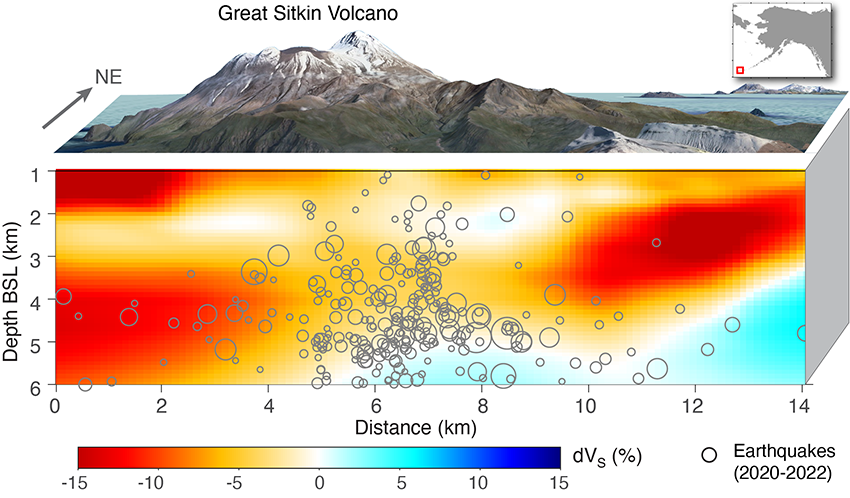Bell powers notable studies of seismology, volcano dynamics
A Purdue professor is using the Rosen Center for Advanced Computing (RCAC)’s powerful Bell supercomputer for seismic imaging and to better understand the lithosphere, the outermost layer of the Earth, and how earthquakes and volcanoes occur.
Xiaotao Yang, an assistant professor of earth, atmospheric and planetary sciences, is a seismologist who uses seismological methods to solve geological and tectonic problems and understand natural hazards.
Yang and his research team try to understand the long-term evolution of the lithosphere going back hundreds of millions of years and study how the structure of the Earth has been modified by tectonic processes. On a shorter time scale, they also study active volcanoes to understand the magma plumbing system, including its geometry dynamics and how it changes over time before and after eruption.
Some of his projects involve processing hundreds of gigabytes or tens of terabytes of data, which is where Bell comes in. Using Bell allows Yang and his team to run advanced seismic waveform-based simulations that use parallel processing involving many CPUs at once.
“We’re working on projects that are very computationally intensive, so we need a lot of computational power. This work wouldn’t be possible without a supercomputer like Bell,” explains Yang.
In one project using Bell, selected by the Geophysical Research Letters as a cover story, Yang and his collaborators used an emerging technique that uses the seismic energy produced by ocean waves to measure subtle changes in the velocity of seismic waves propagating across the Great Sitkin volcano in Alaska, which has been erupting continuously since 2021.

In another project studying the Great Sitkin volcano and using Bell, Yang and his collaborators constructed a seismic velocity chamber structure for the uppermost 6 kilometers of the volcano to model the geometry of the magma system. Specifically, they proposed that the Great Sitkin volcano has not one but two magma reservoirs and that this double-reservoir system results in a six-stage eruption cycle, rather than the traditional five-stage eruption cycle, due to the second chamber kicking in following the initial eruption from the deeper chamber.
This work will ultimately help better predict volcanic eruptions and assess volcanic hazards.
In addition to RCAC’s computational resources, Yang also credits RCAC staff with support. “When I was setting up my computational environment, I received lots of help from the RCAC staff to get my modules running on Bell,” he says “RCAC staff also provided suggestions to optimize my workflows and make sure they were running efficiently.”
The Bell community cluster, which came online in 2020, debuted as number 431 on the list of the world’s 500 most powerful supercomputers. Bell was the ninth Purdue community cluster to make the Top 500 list. Altogether, Purdue’s community clusters provide nearly 20 petaFLOPs to drive research at Purdue.
RCAC’s community cluster model provides researchers with peace of mind, low overhead and the most cost effective pricing, since RCAC provides the infrastructure, maintains and updates hardware and software, allowing researchers to focus on science, and works with vendors to obtain the best pricing by pooling funds to leverage greater group purchasing power.
To learn more about the Bell Cluster and other RCAC resources, contact rcac-help@purdue.edu.
